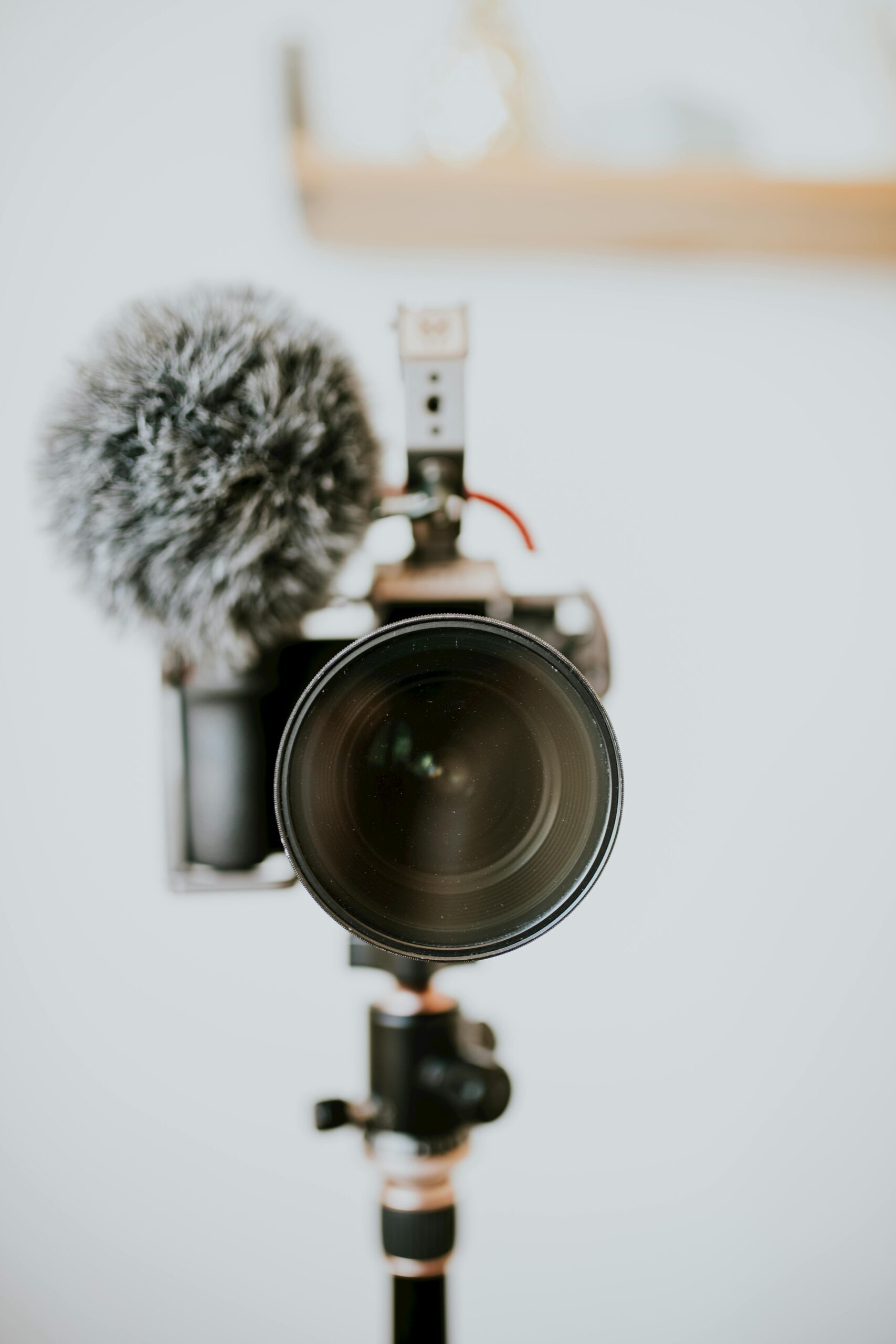You ever wondered why everyone’s suddenly obsessed with a YouTube to Mp3 converter 320 kbps? Like, seriously, what’s the big deal about that 320 kbps bit rate anyway? I mean, we all want our music sounding crisp and clear, but is it really worth hunting down the best quality converters when there’s a million options out there? Not gonna lie, this surprised me too – I always thought a quick download was all that mattered, but turns out, YouTube to Mp3 converter 320 Kbps is a whole different beast. Why is no one talking about the difference it makes? Maybe it’s just me, but I feel like people overlook the importance of audio quality when ripping tracks from YouTube, and that’s kinda baffling.
So, what if we’ve been wrong all along, settling for less-than-stellar sound? When you choose the right YouTube to Mp3 converter 320 kbps, you’re not just grabbing a file, you’re grabbing the best possible version of your favourite tunes. You’d think this would be obvious, right? But nope, most converters out there either compress too much or give you sketchy sound quality. This article dives into why picking the best quality actually matters, how it impacts your listening experience, and which tools are worth your time. If you’ve ever asked yourself “Why bother with 320 kbps anyway?” stick around – you might just find out that quality does make a massive difference, and it’s not just some nerdy audio snob thing.
What Makes a YouTube to MP3 Converter 320 Kbps the Ultimate Choice for Audiophiles?
Alright, so you’re here because you probably googled something like “youtube to mp3 converter 320 kbps” or maybe you’re just lurking around wondering why on earth anyone would care about this little nugget of info. Honestly, I get it. Why does the bitrate even matter, and why is 320 kbps suddenly the holy grail for audiophiles when it comes to ripping tunes off YouTube? I mean, YouTube itself is mostly compressed garbage anyway, right? Or… is it?
Anyway, what was I saying again? Oh right, “What Makes a YouTube to MP3 Converter 320 Kbps the Ultimate Choice for Audiophiles?” Buckle up, because it’s gonna be a bit of a ride — not necessarily smooth, but hey, that’s life.
Why 320 Kbps? What’s the Big Deal Anyway?
First off, let’s break down the magic number. 320 kbps stands for 320 kilobits per second, which is basically the bitrate of the MP3 file. Bitrate, in layman’s terms, means how much data is crammed into each second of the audio. The higher the bitrate, the better the sound quality — generally speaking. At 320 kbps, you’re getting near-CD quality audio, which is like the gold standard for MP3s.
Here’s a quick rundown:
- 128 kbps: Meh, kinda tinny and compressed. Good for podcasts maybe.
- 192 kbps: Slightly better, but still you can tell something’s missing.
- 256 kbps: Decent for casual listening.
- 320 kbps: The best you can get for MP3s, basically.
Now, why even bother with 320 kbps from YouTube? Because YouTube streams videos mostly at 128 kbps or less for audio. So if you’re converting YouTube videos to MP3, you want your converter to preserve whatever quality is there, and not degrade it further. That’s why a YouTube to MP3 converter 320 kbps is, well, the ultimate choice for those of us who care — or pretend to care — about sound quality.
YouTube to MP3 Converter 320 Kbps: Why Choose The Best Quality?
Honestly, it’s a bit of a minefield out there. There are loads of converters claiming to be the “best” or “fastest,” but how many actually deliver high-quality audio? Spoiler: Not many.
Choosing a converter that outputs 320 kbps MP3 files means:
- Better sound clarity — instruments and vocals are clearer.
- Less compression artefacts — no weird digital noises or muffling.
- More versatile files — you can play them on pretty much any device.
- Great for audiophiles — those rare folks who actually listen closely.
But, not really sure why this matters to everyone. Like, most people just want to download a tune they like and not worry about the bitrate. Maybe it’s just me obsessing over this sort of stuff while others just want their music on the go.
A Little History Lesson (Because Why Not?)
MP3s have been around since, what, the early 90s? It revolutionised music sharing and listening back in the day. Before streaming took over, MP3s at 128 kbps were the norm because internet speeds were rubbish. Over time, people started wanting better quality and 320 kbps became the “standard” for high-quality MP3s.
YouTube’s audio quality has improved, but it’s still limited by streaming needs — so it’s not like you’re getting a studio master from a random YouTube clip. That’s why when you convert YouTube videos to MP3, you need a converter that can squeeze the best possible audio out of what’s there.
Here’s a Handy Table for Your Brain
| Bitrate (kbps) | Typical Use Case | Quality Level | File Size (approx) |
|---|---|---|---|
| 128 | Podcasts, casual listening | Low | Small (~1 MB per min) |
| 192 | Online radio, casual music | Medium | Medium (~1.5 MB per min) |
| 256 | Most streaming services | Good | Larger (~2 MB per min) |
| 320 | Audiophiles, music lovers | Excellent (near CD) | Largest (~2.5 MB per min) |
Alright, Real Talk: What Makes a Good YouTube to MP3 Converter 320 Kbps?
Look, it’s not just about the bitrate setting. The converter’s algorithm, its ability to extract the highest quality audio stream from YouTube, the ease of use, and whether it’s riddled with
Top 10 Reasons to Use a YouTube to MP3 Converter 320 Kbps for Crystal Clear Sound
Alright, so you’re probably here because you heard about this whole YouTube to MP3 converter 320 Kbps thing, right? Maybe you googled “Top 10 Reasons to Use a YouTube to MP3 Converter 320 Kbps for Crystal Clear Sound” or something along those lines, or you’re just wondering why anyone even bothers with these converters in the first place. Honestly, it’s a bit of a rabbit hole, but let’s dive in before I get distracted again. Spoiler: the quality does matter, even if your average listener kinda doesn’t care.
Why Bother with YouTube to MP3 Converter 320 Kbps Anyway?
First off, 320 Kbps—what’s the big deal? It’s just numbers, right? Well, not exactly. For the uninitiated, Kbps stands for kilobits per second, which basically means how much data your audio file uses every second. The higher the number, the better the sound quality (usually). 320 Kbps is almost like the gold standard for MP3s. It’s the highest bitrate most MP3 converters offer, giving you that crisp, clear sound that almost feels like you’re in the studio with the artist. Or at least, that’s the idea.
Now, people might argue, “Oh, I can’t tell the difference between 128 Kbps and 320 Kbps,” but maybe it’s just me, my ears are weird, or I’ve been listening to way too many vinyl records lately. Seriously though, if you’re an audiophile or even just someone who hates tinny, compressed sound, 320 Kbps is where it’s at.
Top 10 Reasons to Use a YouTube to MP3 Converter 320 Kbps for Crystal Clear Sound
Anyway, here’s a quick rundown because who doesn’t love lists? Plus, it feels like I should justify this obsession.
- Superior Audio Quality – This one’s obvious, but 320 Kbps keeps the nuances in music intact.
- Better Listening Experience on Headphones – If you’re rocking decent headphones, lower bitrates sound muddy AF.
- Ideal for Music Lovers and DJs – Professionals sometimes use these files for mixes or playlists.
- Offline Listening – Perfect for when your Wi-Fi drops or you’re on that long subway ride (ugh, the NYC subway).
- Smaller File Size than Lossless Formats – Compared to FLAC or WAV, 320 Kbps MP3s are lighter, so you save storage.
- Universal Compatibility – Works on basically every device without fuss.
- Preserves Sound Dynamics – Keeps highs and lows clear, unlike those crappy, compressed 128 Kbps files.
- Easy Sharing – Smaller files mean faster uploads/downloads.
- Quick Conversion Time – Most converters are speedy, so you’re not waiting around forever.
- It’s Just Better, Period – No seriously, once you’ve heard 320 Kbps, going back feels like a downgrade.
YouTube To Mp3 Converter 320 Kbps: Why Choose The Best Quality?
Now, why specifically choose the best quality converter? Because, believe me, not all converters are created equal. Some tools promise 320 Kbps but actually deliver something closer to 192 or 256, which is a bit cheeky, if you ask me. And then there’s the whole malware and sketchy ads issue — seriously, who even came up with this?
If you want the real deal, you gotta pick a reliable converter. The best ones keep the original audio stream intact without unnecessary compression or noise. Plus, some have nifty features like batch downloads or even editing tags (you know, artist name, album, etc.). It’s a bit like choosing between a dodgy kebab at 3 AM or a proper sit-down meal — you get what you pay for.
How to Pick the Right YouTube to MP3 Converter 320 Kbps
Here’s a quick checklist because I got distracted halfway through the last paragraph and nearly forgot what I was saying:
- Check the bitrate settings — does it actually offer 320 Kbps?
- Look for user reviews — real people complaining about downloads or spyware is a red flag.
- Ease of use — you don’t wanna wrestle with complicated interfaces.
- Speed — some converters take ages, and frankly, ain’t nobody got time for that.
- Extra features — batch conversion, tag editing, playlist downloading, etc.
- Legal considerations — um, don’t be an idiot — respect copyright laws.
Sorry, had to grab a coffee — anyway…
Comparing 320 Kbps with Other Bitrates
| Bitrate (Kbps) | Sound Quality | Typical Use | File Size (Approx.) |
|—————-|
How Does 320 Kbps Quality Enhance Your YouTube to MP3 Conversion Experience?
Alright, so you’ve probably stumbled upon a million YouTube to MP3 converters online, right? And like me, you might have wondered, “Does it really matter if it’s 320 Kbps or just some random lower bitrate?” Honestly, I was sceptical at first. I mean, it’s just music, or podcasts, or whatever you’re ripping from YouTube—how much difference can it make? But, turns out, 320 Kbps quality is, well, kinda a big deal. Or at least that’s what those audiophiles keep ranting about. Anyway, let’s dive into this mess, shall we?
How Does 320 Kbps Quality Enhance Your YouTube to MP3 Conversion Experience?
Right, so 320 Kbps (kilobits per second) is basically the highest bitrate you can get for an MP3 file that still keeps it in the “lossy” audio format. In plain English: it’s the best quality MP3 you can grab without going full WAV or FLAC (which are massive file sizes and, frankly, a pain to carry around on your phone).
- Better sound clarity: 320 Kbps files tend to retain more of the original audio detail and depth, which means you get crisper highs, richer mids, and punchier bass.
- Less compression artefacts: Lower bitrates like 128 or 192 Kbps often introduce weird sounds or distortions, especially noticeable on good headphones or speakers.
- More dynamic range: Music sounds more “alive,” like the difference between watching a grainy old VHS tape and a shiny Blu-ray.
Not really sure why this matters to everyone, but if you’re someone who actually cares about how their music sounds (rather than just a background noise), then 320 Kbps is the way to go. Maybe it’s just me, but when I listen to a track converted at 320 Kbps vs 128 Kbps, it feels like night and day. Or maybe I’m just imagining things because I’m a bit obsessed with sound quality… who knows.
YouTube To Mp3 Converter 320 Kbps: Why Choose The Best Quality?
Okay, so here’s the thing: not all YouTube to MP3 converters are created equal. Some just slap a low-quality MP3 on your phone and call it a day. Others, the better ones, actually allow you to choose 320 Kbps. And that choice? It’s actually pretty important.
Here are some reasons why choosing the best quality is worth it, even if you’re on a budget or lazy like me:
Future-proofing your collection
If you’re downloading tracks to keep, better quality means you won’t have to redownload or upgrade later when your ears develop (or when your fancy new headphones arrive).Compatibility with devices
Believe it or not, some older MP3 players or car stereos don’t handle lower bitrates well and might sound tinny or just plain rubbish. 320 Kbps files tend to be more universally compatible.Better for editing and remixing
If you’re a budding DJ or podcaster and want to tweak the audio later, starting with a higher bitrate file means less degradation when you edit or compress again.Resale or sharing
Yeah, I know, sharing music files is a grey area, but if you ever do share them, people notice the difference. No one wants to listen to muffled tunes, right?
Seriously, who even came up with the 128 Kbps standard as “good enough”? It’s like choosing to drink warm tea when you could have it piping hot. Anyway, what was I saying again? Oh right, quality!
The Nitty-Gritty: How To Spot A Good YouTube to MP3 Converter 320 Kbps
Not all converters that claim 320 Kbps actually deliver it. This is where it gets a bit shady. Some sites just upscale lower bitrate files pretending they’re 320, which is basically like putting a fancy label on cheap wine. Here’s a quick checklist to make sure you’re not getting scammed:
- True bitrate confirmation: Look for converters that show the actual bitrate of the output file after conversion.
- No annoying watermarks or ads: Some free converters add noise or watermarks that mess with the audio.
- Speed and stability: A decent converter won’t crash halfway or produce corrupted files.
- Privacy and safety: Watch out for shady sites asking for too much personal info or installing sketchy software.
| Feature | Why It Matters |
|---|---|
| True 320 Kbps Output | Ensures actual high-quality audio |
| No Ads/Watermarks | Keeps |
The Science Behind 320 Kbps: Why It’s the Best Bitrate for YouTube to MP3 Downloads
Alright, so you’re probably here because you’ve heard the phrase “320 Kbps” thrown around like it’s some kind of magical number when it comes to YouTube to MP3 converters. Honestly, same. I mean, why is 320 Kbps the “best” bitrate? And what even is a bitrate? Seriously, who even came up with this? Anyway, let’s dive into the science behind 320 Kbps and why it’s apparently the go-to choice for ripping audio off YouTube… or so the internet claims.
The Basics: What’s This Bitrate Thing Anyway?
Okay, so bitrate is basically how much data is processed per second in an audio file. The “Kbps” stands for kilobits per second, which sounds fancy but really just means how many thousands of bits are used every second to store your music. The higher the bitrate, the more data you get, and theoretically, the better the sound quality. But, uh, it’s not always that simple.
- Lower bitrates like 128 Kbps are kinda like listening through a tin can (not literally, but you get the drift).
- 192 Kbps is a bit better, but still meh for audiophiles.
- 320 Kbps? That’s where the magic supposedly happens — near CD-quality audio without gobbling up too much space.
Honestly, the difference between 192 Kbps and 320 Kbps might be lost on most people unless you’re using proper headphones or speakers. But for some reason, 320 Kbps became the “gold standard” for YouTube to MP3 converters.
Why 320 Kbps? The Science-ish Explanation
So, here’s what I found after digging around a bit (with a side eye because, well, this stuff can get complicated):
- Lossy Compression: YouTube streams audio in compressed formats to save bandwidth. When you convert YouTube videos to MP3, the audio is “lossy,” meaning some data is lost to keep the file size manageable.
- 320 Kbps = Highest MP3 Bitrate: MP3 files max out at 320 Kbps, so if you want the best quality MP3, that’s the highest you can go.
- Closer to Original Audio: 320 Kbps files retain more of the original audio details compared to lower bitrates. This means fewer annoying artefacts like muffled sounds, weird warbles, or robotic voices (ugh, can’t stand those).
- Compatibility: Most devices and players support 320 Kbps MP3s without any issues, making it a safe bet for quality and ease of use.
But, here’s the twist: YouTube itself doesn’t upload audio in 320 Kbps MP3. It uses AAC or Opus codecs, often at bitrates lower than 320 Kbps. So converting a YouTube video to a 320 Kbps MP3 is kinda like blowing up a small photo to a bigger size — it looks better on paper, but you’re not really getting new details.
YouTube To MP3 Converter 320 Kbps: Why Choose The Best Quality?
Look, I get it. You want your tunes sounding crisp and clear, especially if you’re the type who notices the difference between “meh” and “wow” audio. Here’s why you might wanna pick a YouTube to MP3 converter that offers 320 Kbps:
- Better Listening Experience: Especially on decent headphones or speakers. You’ll hear the bass thump, the vocals clear, and the instruments separate nicely.
- Future-Proofing: If you ever want to use the audio in a project or just archive it, 320 Kbps gives you more wiggle room for editing or converting later.
- Avoid Regret: Trying to save space with a lower bitrate might seem smart now, but you’ll probably complain later when your favourite track sounds like rubbish.
- No Extra Cost: Well, most converters don’t charge extra for 320 Kbps, so why not go for the best quality available?
Quick Comparison Table: Bitrate vs Quality vs File Size
| Bitrate (Kbps) | Approx. File Size (3-min song) | Sound Quality | Suitable For |
|---|---|---|---|
| 128 | ~3 MB | Low, tinny, compressed | Casual listening, phones |
| 192 | ~4.5 MB | Moderate, decent | Everyday use, some audiophiles |
| 320 | ~7 MB | High, near CD-quality | Serious music lovers, editing |
Wait, Hold Up — Coffee Break ☕
Sorry, had to grab a coffee — anyway… where was I? Oh yeah, the whole “best quality” thing.
At the end of the day, the difference might be subtle for most folks
Step-by-Step Guide to Using a YouTube to MP3 Converter 320 Kbps Safely and Efficiently
Alright, so you want to dive into the mysterious world of converting YouTube videos to MP3 files at 320 Kbps, and, honestly, who doesn’t? Whether you’re some music freak wanting the best audio quality or just someone who’s too lazy to stream every time—this “Step-by-Step Guide to Using a YouTube to MP3 Converter 320 Kbps Safely and Efficiently” thing is probably your new best mate. But hey, before you go off downloading every tune at max quality, maybe we should chat about why 320 Kbps even matters. Spoiler: it’s not just a random number someone pulled out of thin air.
YouTube To Mp3 Converter 320 Kbps: Why Choose The Best Quality?
Okay, so 320 Kbps, right? That’s basically the highest bitrate for MP3 files, which means it’s the closest you’ll get to CD quality without drowning in file size. If you’re like me, sometimes you don’t really notice the difference between 128 Kbps and 320 Kbps (especially if you’re listening on some dodgy laptop speakers or your phone’s earbuds). But, if you’re using decent headphones or a proper sound system, the difference is… well, let’s say it’s noticeable enough to justify the slightly bigger file.
Not really sure why this matters, but audio nerds swear by it. They say 320 Kbps keeps the music crisp, clear, and all those little details you love in a song intact. Lower bitrates can sound muffled or tinny, and nobody wants that, especially if you’re into genres like jazz or classical where every note counts. Also, if you’re planning to do some editing or remixing (yeah, right, like I ever do that), starting with better quality is… well, it’s smarter.
Anyway, what was I saying again? Oh right, why choose the best quality. Here’s a quick rundown of why 320 Kbps is worth it:
- Superior sound quality compared to lower bitrates
- Retains more detail and nuances in music
- Better compatibility with high-end audio gear
- Less compression artefacts (you know, those weird sounds that pop up sometimes)
- Future-proofing your music stash (because who knows what tech you’ll have in a few years)
Step-by-Step Guide to Using a YouTube to MP3 Converter 320 Kbps Safely and Efficiently
Now, before you start smashing that “convert” button everywhere, a little disclaimer: not all YouTube to MP3 converters are created equal. Some can be sketchy, full of ads, malware, or just plain rubbish. And yeah, there’s a legal grey area here — downloading copyrighted stuff without permission is a no-no, so maybe stick to royalty-free or your own uploads. Just saying.
Right, so here’s my tired but hopefully useful guide to do this without frying your brain or laptop:
Find a reliable YouTube to MP3 converter
This is the tricky bit. Go for well-reviewed, ad-minimal sites or desktop apps. Some popular ones are 4K Video Downloader, YTMP3.cc (meh, a bit sketchy sometimes), or even browser extensions if you trust them. Avoid any site that asks for your credit card or looks like it’s from 1999.Grab the YouTube video link
Go to YouTube, find the video/audio you want, and copy the URL from the address bar. Easy.Paste the URL into the converter
Most sites/apps have a neat box where you just paste the link. Make sure you select “MP3” as the output format.Select 320 Kbps as the bitrate
This is where some converters fail you. Not all offer 320 Kbps (because, surprise, it’s a bit more demanding). Pick 320 Kbps if available, or else you’re stuck with 128 or 192. Don’t settle for less unless you’re desperate or the file size is a problem.Hit “Convert” and wait
This bit can feel painfully slow sometimes, especially on free converters. Grab a coffee or check your phone while it does its thing.Download the MP3 file
Once done, download your shiny new high-quality MP3. Save it somewhere you won’t forget because losing files is the worst.Scan for viruses (optional but recommended)
If you’re paranoid (and you should be), run the file through your antivirus software. Better safe than sorry.
Speaking of coffee—sorry, had to grab one — anyway, as you can see, it’s not rocket science but there’s a bit of a dance with dodgy sites, file quality, and legality. Seriously, who even came up with this whole You
Comparing YouTube to MP3 Converters: Why 320 Kbps Stands Out from the Rest
Alright, so here’s the thing about YouTube to MP3 converters and why everyone seems to obsess over 320 kbps like it’s the holy grail of audio quality. Honestly, I never thought I’d be this deep into audio bitrates at 2am, but here we are. YouTube To Mp3 Converter 320 Kbps: Why Choose The Best Quality? Well, let me try to explain without sounding like a total geek — though I’m failing spectacularly already.
Why Bother With 320 Kbps Anyway?
First off, what even is this 320 kbps thing? For those who don’t spend their evenings reading about audio codecs (and honestly, who does?), kbps means kilobits per second — basically, it’s a measure of how much audio data is packed into one second of music. The higher the number, the better the sound quality should be — at least in theory. But here’s the kicker: YouTube streams videos at varying qualities, and when you convert a YouTube video to an MP3, the quality depends on both the original upload and the converter.
320 kbps is often touted as the “best quality” MP3 bitrate. It’s like the gold standard for audio files that are small-ish but still sound decent. Compared to 128 or 192 kbps, 320 kbps files have less compression, meaning the music sounds richer and clearer. But honestly, sometimes I wonder if most people can even tell the difference unless they’re using fancy headphones or audio gear. Or maybe it’s just me.
Comparing YouTube to MP3 Converters: Why 320 Kbps Stands Out from the Rest
Right, so if you’re hunting for a YouTube to MP3 converter 320 kbps, you probably want to avoid the rubbish ones that give you some crappy 128 kbps file that sounds like it was recorded underwater. But here’s a quick rundown:
| Feature | 128 kbps | 192 kbps | 320 kbps |
|---|---|---|---|
| Sound Quality | Meh, kinda muffled | Better, noticeable | Clear, detailed |
| File Size | Small | Medium | Larger |
| Best For | Casual listening | Average users | Audiophiles & pros |
| Compatibility | Universal | Universal | Mostly universal |
YouTube to MP3 converters vary wildly. Some give you the option to pick the bitrate, others just slap whatever they can grab from the video. The problem is, YouTube itself often compresses audio to less than 320 kbps — usually around 128 or 160 kbps for most streams. So, if the source isn’t high quality, converting it to 320 kbps doesn’t magically improve the sound. Seriously, who even came up with this?
Anyway, what was I saying again? Oh yeah, picking a converter that supports 320 kbps is crucial if you actually want decent quality. Otherwise, you might as well download a potato.
What To Look For In A YouTube To Mp3 Converter 320 Kbps
Okay, so you’re sold on 320 kbps or at least curious enough. Here’s a quick checklist you might want to keep handy:
- Supports 320 kbps output: Duh. Some converters just don’t bother.
- Fast and reliable: Nobody’s got time for converters that take an eternity or crash mid-download.
- No sketchy ads or malware: Because, yeah, some sites are a nightmare.
- Allows batch downloads: For those playlists or albums you’re obsessing over.
- Preserves metadata: Artist, album, track info — all that jazz.
- Free or reasonably priced: Because, let’s be real, paying £20 for a converter is a bit much.
But Wait, Isn’t It Illegal? (Sorta)
Look, I’m not a lawyer, but converting YouTube videos to MP3s is a legal grey area. YouTube’s terms explicitly say you shouldn’t download content unless you have permission. But everyone and their nan does it anyway, so don’t shoot the messenger. Just be mindful and maybe support the artists by buying their music if you really like it? Or stream it legally? You know, basic human decency stuff.
Sorry, had to grab a coffee — anyway…
A Little History To Keep Things Interesting (Or Not)
YouTube launched in 2005, and almost immediately people wanted to rip audio off it. Because, obviously, who wants to watch a video when you just want the song? MP3s have been around since the 90s, and 320 kbps became popular among audiophiles as a sweet spot between file size and sound quality. It’s like the compromise your mum makes when she buys a
Can You Really Hear the Difference? 320 Kbps vs Lower Bitrate YouTube to MP3 Conversions
Alright, let’s just get this out there — can you really hear the difference between a 320 Kbps YouTube to MP3 conversion and, say, some lower bitrate mumbo jumbo? I mean, supposedly, the higher the bitrate, the better the sound quality, right? But honestly, sometimes it feels like a load of audio snobbery, like people flexing over headphones no one else can afford. Anyway, here we go — diving into the weird world of YouTube to MP3 converters and why everyone suddenly cares about 320 Kbps like it’s some sort of golden ticket.
Can You Really Hear the Difference? 320 Kbps vs Lower Bitrate YouTube to MP3 Conversions
So, first off, what the heck is bitrate anyway? In simple terms, bitrate is how much data your audio file carries every second — measured in kilobits per second (Kbps). More bits usually means more sound info, which should mean better quality. YouTube to MP3 converters often offer different bitrates, with 320 Kbps being the highest “standard” quality you can get without venturing into lossless territory (which YouTube doesn’t even offer, FYI).
Here’s the kicker though: most people can’t actually tell the difference between 320 Kbps and, say, 192 Kbps — unless you’ve got some serious audio gear or you’re a professional ear. Some studies even suggest that for casual listening, the difference is negligible, especially on regular earbuds or phone speakers.
But then again, maybe it’s just me, but I swear some songs sound a bit sharper at 320 Kbps. Like, the highs don’t get all tinny and the bass feels fuller? Or maybe I’m imagining that because I’ve been staring at this screen for hours. Anyway, here’s a quick rundown of typical bitrates you might find:
- 128 Kbps: Low quality, good for saving space but sounds pretty meh.
- 192 Kbps: Decent, most casual listeners won’t complain.
- 256 Kbps: Almost indistinguishable from 320 for many.
- 320 Kbps: The “premium” MP3 quality, supposedly closest to CD.
YouTube To Mp3 Converter 320 Kbps: Why Choose The Best Quality?
Okay, now, why would you bother with a YouTube to MP3 converter 320 Kbps option? Isn’t YouTube already compressed? Well, yes, YouTube compresses a lot. The original audio on YouTube videos is often 128 to 192 Kbps, sometimes better, sometimes worse — depends on the uploader and the video quality. So when you convert YouTube videos to MP3 at 320 Kbps, you’re not magically making the audio better. You’re basically just converting a compressed file into a bigger compressed file. Bit weird, but that’s tech for ya.
Still, people pick 320 Kbps because:
- Less compression artefacts: The sound is cleaner, less “muddled.”
- Better for editing: If you’re gonna mess around with the audio later, start with the best quality.
- Just feels fancy: Honestly, it’s a bit like buying a posh coffee — probably tastes the same, but it’s the principle.
Quick Table: YouTube Audio Bitrate vs MP3 Conversion Bitrate
| YouTube Original Audio | Converted MP3 Bitrate | Realistic Quality Gain? |
|---|---|---|
| 128 Kbps | 128 Kbps | None |
| 128 Kbps | 320 Kbps | Nope, just bigger file |
| 192 Kbps | 192 Kbps | Same |
| 192 Kbps | 320 Kbps | Slightly cleaner, maybe |
| 256+ Kbps (rare) | 320 Kbps | Minimal difference |
Sorry, had to grab a coffee — anyway…
Right, back to the madness. So, if you’re using a random YouTube to MP3 converter 320 Kbps option, just know it’s not a magic fix. The source audio quality limits everything. YouTube’s compression is like trying to fit an elephant into a Mini Cooper — some stuff just has to get squished. And no matter how many kilobits you throw at it later, that elephant’s still a bit cramped.
Also, some converters are just rubbish — they slap on 320 Kbps as a “setting” but don’t actually improve the file’s quality. It’s mostly a marketing trick to look professional or attract clicks. I swear, there’s one converter site that claimed “lossless 320 Kbps conversion” and I nearly lost it. Like, which planet are you on?
So, what should you actually
Best Free YouTube to MP3 Converter 320 Kbps Tools in 2024: Features and Benefits
Alright, so you’re on the hunt for the best free YouTube to MP3 converter 320 Kbps tools in 2024, huh? Yeah, me too. Honestly, it’s one of those things you think should be dead simple but ends up being a bit of a faff. I mean, you just want your bangers in crisp quality without paying a dime or dealing with dodgy ads popping up every two seconds. But here we are, still sifting through endless converters, wondering if that “320 Kbps” label even makes a difference or if it’s just marketing mumbo jumbo. Spoiler alert: it kinda does, but also… maybe not as much as you think? Anyway, let’s dive into this mess and figure out what’s worth your time in 2024.
Why You Even Care About 320 Kbps (Seriously)
So, first things first — what’s the big deal about 320 Kbps? For those who aren’t audiophiles (like me, most days), 320 kilobits per second is basically the highest bitrate for MP3s that still fits in the “compressed but decent” category. It’s like, you want your music files to sound nice, right? Not like some tinny radio broadcast from 1999. The higher the bitrate, the better the audio quality — or so they say.
- 320 Kbps = better sound clarity and depth
- Lower bitrates (128 Kbps or 192 Kbps) can sound muffled or flat
- Large file size compared to lower bitrates but still manageable for most devices
Not really sure why this matters to everyone, but musicians and sound engineers swear by it. The subtle guitar riffs, bass, and vocals get preserved better at 320 Kbps. Maybe it’s just me, but I do notice the difference when I’m switching between Spotify’s “normal” quality and “very high” quality settings.
Anyway, what was I saying again? Oh right, YouTube to MP3 converters.
Top Features You Need in a YouTube to MP3 Converter 320 Kbps Tool
There’s a gazillion tools out there that claim to be “the best” or “fastest” or “most reliable.” But honestly, most of them are either full of ads, spyware, or just plain don’t work half the time. So here’s what you should really look for:
- Actual 320 Kbps output — not just a claim on the homepage. Test it if you can.
- Free usage without annoying watermarks or forced upgrades
- No need to install sketchy software (online converters FTW)
- Fast download speeds — because who’s got time to wait in 2024?
- Supports batch downloads (if you’re feeling ambitious)
- Clean interface without pop-ups or redirects
Honestly, if a tool ticks most of these, you’re in business. But if it’s asking for your email or trying to install a browser extension, just nope outta there. Seriously, who even came up with this? Like, how is downloading music suddenly a minefield of dodgy websites?
Best Free YouTube to MP3 Converter 320 Kbps Tools in 2024
Okay, so here’s a quick rundown of some tools that, as of 2024, are actually decent and don’t make you want to throw your laptop out the window:
| Tool Name | Features | Pros | Cons |
|---|---|---|---|
| YTMP3.cc | Simple interface, 320 Kbps output | Fast, no signup required | Occasional ads, limits batch size |
| 320ytmp3.com | Dedicated 320 Kbps converter | Consistent quality | Slightly slower processing |
| FLVTO.biz | Multi-format support, 320 Kbps available | Downloads from multiple sites | Pop-ups can be annoying |
| MP3Download.to | Clean UI, quick conversion, 320 Kbps output | No registration needed | Sometimes URL parsing fails |
| 2conv.com | Supports batch downloads, 320 Kbps option | Good for playlists | Ads everywhere (ugh) |
Yeah, none of them are perfect—like you’ll have to dodge some ads or wait a bit sometimes, but that’s the price of free, isn’t it? And honestly, paying for some premium service just to rip your favourite tunes? Bit of a mug move when these actually do the job.
Sorry, had to grab a coffee — anyway…
YouTube to MP3 Converter 320 Kbps: Why Choose The Best Quality?
Look, if you’re just downloading some random podcast or a quick audio clip, meh, quality might not matter that much. But
How to Choose the Best YouTube to MP3 Converter 320 Kbps for Your Music Collection
Alright, so you’re hunting for the best YouTube to MP3 converter 320 Kbps for your music collection, huh? Well, buckle up, because this topic is deceptively straightforward but kinda messy once you start digging. I mean, who even knew there was so much to consider when ripping audio off YouTube? Seriously, it’s not just about clicking “convert” and calling it a day. No, mate, the quality, legality, and your sanity come into play. Anyway, I’ll try to make sense of it without sounding like a total bore. Let’s dive in.
Why Does Quality Even Matter? YouTube To MP3 Converter 320 Kbps: The Big Deal
Okay, first off, what’s with this 320 Kbps obsession? Can’t you just download anything and slap it on your playlist? Well, technically yes—but if you’re a bit of an audiophile or just someone who hates hearing a song sounding like it’s coming from a tin can, then 320 Kbps is the sweet spot.
320 Kbps stands for “kilobits per second” and basically tells you how much audio data is packed into each second of music. The higher the number, the better the quality… usually. YouTube streams at different qualities—sometimes 128 Kbps, sometimes 256 Kbps—but rarely at 320 Kbps. So when you convert YouTube videos to MP3s at 320 Kbps, you’re essentially aiming for the highest quality output the converter can muster.
Not really sure why this matters to everyone, but some folks swear they can hear the difference between 128 and 320 Kbps. Maybe it’s just me, but after a couple of drinks, I doubt any mortal could tell. Still, if you’re gonna do it, might as well do it right, eh?
How To Choose the Best YouTube to MP3 Converter 320 Kbps for Your Music Collection
Alright, now onto the tricky bit—picking the actual converter. There’s a gazillion of these things online, and half of them look dodgier than a bloke selling fake Rolexes on the street.
Here’s a rough guide, because who has time to test every single one?
Audio Quality Settings
Look for converters that explicitly offer 320 Kbps as an option. Some sneaky ones just cap out at 128 or 192 Kbps but still advertise “high quality.” Cheeky.Speed and Reliability
Nobody wants to wait ages for a single song. The best converters process quickly without crashing or dropping your files halfway through. I swear, some sites act like they’re running on dial-up from 1999.User Interface (UI)
Is it easy to use or does it look like a NASA control panel? Honestly, if I have to read a manual, I’m out. Simple and straightforward wins here.Ads and Pop-ups
Prepare for spammy ads and pop-ups. Some sites are worse than a telemarketer on a Sunday morning. Find one that’s tolerable, or just use an ad blocker because who has the patience?Legal Considerations
This one’s a bit of a grey area, and I’m not your lawyer, but generally, downloading copyrighted music without permission is a no-no. Some converters try to duck responsibility by saying “for personal use only” or some legal mumbo jumbo.Compatibility
Check if the converter works on your device—PC, Mac, smartphone, whatever. Some are browser-based, others need you to download sketchy software. I’d avoid those unless you fancy a virus.
Quick Table: Comparing Popular YouTube to MP3 Converters
| Converter Name | Max Quality | Speed | Ads Level | Ease of Use | Notes |
|---|---|---|---|---|---|
| YTMP3.cc | 320 Kbps | Fast | Moderate | Very Easy | Browser-based, reliable |
| 4K YouTube to MP3 | 320 Kbps | Medium | Low | Moderate | Requires download |
| FLVTO.biz | 320 Kbps | Variable | High | Easy | Loads of pop-ups |
| Any Video Converter | 320 Kbps | Fast | Low | Moderate | Good for batch downloads |
Sorry, had to grab a coffee — anyway… where was I? Oh yeah, choosing the right converter.
Why Bother With 320 Kbps? Seriously, Who Came Up With This?
Honestly, sometimes I wonder if all this fuss about 320 Kbps is just a load of bull. YouTube itself compresses audio a lot; even if you convert at 320
The Impact of 320 Kbps Quality on Portable Music Devices and Streaming Experience
Alright, so here we go — diving headfirst into the murky waters of audio quality, portable music devices, and the whole shebang of streaming experiences. Honestly, sometimes I wonder why we fuss so much over tiny numbers like 320 Kbps. I mean, isn’t music just music? But hey, apparently not all music is created equal, and that little number can mean a lot to some folks. So, let’s try to unpack “The Impact of 320 Kbps Quality on Portable Music Devices and Streaming Experience” without losing our minds or getting way too technical, yeah?
What’s the Big Deal About 320 Kbps Anyway?
First off, Kbps stands for kilobits per second — it’s basically a measure of how much data your audio file is packing every second. The higher the bit rate, the better the quality… supposedly. So, 320 Kbps is kinda like the gold standard for MP3s. It’s the highest quality you can get with that format before you hit diminishing returns or just start wasting space.
Here’s a quick glance at common MP3 bit rates and what they usually mean:
| Bit Rate (Kbps) | Typical Quality | File Size (approx.) |
|---|---|---|
| 128 | Low, decent for voice/podcasts | Small |
| 192 | Medium, okay for casual listening | Moderate |
| 256 | Good, better than average | Larger |
| 320 | Best MP3 quality, near CD-like | Largest |
Not really sure why this matters, but the jump from 192 to 320 Kbps is often where audiophiles start feeling all tingly inside. Maybe it’s just me, but the difference is supposed to be pretty noticeable on decent headphones or proper speakers, especially on portable devices that aren’t total rubbish.
Portable Music Devices: Are They Even Worth It Now?
Okay, so now that we know 320 Kbps is, like, the best you can get in MP3 land, what about portable music devices? I mean, smartphones have basically eaten their lunch, right? Well, yes and no. Some people still swear by their fancy DAPs (Digital Audio Players) — you know, those sleek little gadgets that look like they cost a fortune and promise audiophile-grade sound quality.
Here’s where 320 Kbps kinda shines:
- Battery Life: Higher quality files mean your device uses more power to process them. So, a 320 Kbps file might drain the battery faster than a 128 Kbps one.
- Storage: 320 Kbps files are bigger, obviously. So if you’re packing thousands of tracks, you’ll fill up your device’s memory quicker.
- Sound Quality: On decent DACs (digital-to-analogue converters) inside these devices, 320 Kbps can sound pretty lush compared to lower bit rates.
But, honestly, if you’re just using your average Bluetooth earbuds or the tinny speakers on your phone, you probably won’t hear much difference at all. Seriously, who even came up with this obsession over tiny audio details when most people listen with crap headphones?
YouTube To Mp3 Converter 320 Kbps: Why Choose The Best Quality?
Right, switching gears here to something that’s… let’s say a bit dodgy but wildly popular — YouTube to MP3 converters. Yes, those websites and apps that let you rip audio from YouTube videos and save them as MP3 files. I’m not here to judge your life choices, but if you’re gonna do it, might as well do it right, yeah?
“youtube to mp3 converter 320 kbps” is a phrase people google all the time because, duh, if you’re going to download something, you want the best quality possible. But here’s the thing:
- Not all converters support 320 Kbps output.
- Some converters claim to do 320 Kbps but just upscale lower quality audio (which is pointless).
- Genuine 320 Kbps conversion requires the original video to have decent audio quality to begin with.
Anyway, what was I saying again? Oh yeah, choosing a converter that truly delivers 320 Kbps can make your music sound closer to the original — less muffled, fewer artefacts, that sort of jazz.
Quick Tips When Using YouTube To Mp3 Converter 320 Kbps
- Check if the converter allows selecting 320 Kbps explicitly.
- Avoid suspicious sites that bombard you with ads or malware (common, unfortunately).
- Remember that ripping copyrighted music might be illegal in your country — so don’t blame me if you get into trouble.
- Use decent headphones to appreciate the difference; otherwise, you’re wasting good quality on bad gear.
Sorry, had to grab a coffee — anyway…
Streaming Experience: Does 320 Kbps Still Matter
Avoid These Common Mistakes When Using a YouTube to MP3 Converter 320 Kbps
Alright, so you’re thinking about using a YouTube to MP3 converter 320 Kbps, huh? Well, before you dive headfirst into the murky waters of internet converters, let me throw some wisdom your way. Spoiler alert: it’s not as straightforward as just hitting “convert” and bob’s your uncle. Seriously, there’s a bunch of stuff people mess up all the time — and maybe you’re about to make one of those classic blunders too if you’re not careful.
YouTube to MP3 Converter 320 Kbps: Why Bother With The Best Quality?
First off, let’s just address the elephant in the room — why on earth does the bit rate even matter? I mean, it’s just music, right? Well, kinda, but not really. The 320 Kbps (kilobits per second) setting is basically the highest quality you’ll get on an MP3 file. It’s like ordering a large latte but getting a tiny espresso shot instead. You want that rich, full flavour, not some sad little watered-down thing.
To break it down:
- 320 Kbps means the MP3 file is encoded at 320,000 bits per second of audio.
- Higher bit rate = better sound quality (usually).
- Lower bit rate = smaller file size, but audio sounds like it’s been chewing gravel.
Now, not everyone can hear the difference, and maybe you’re just listening on cheap earbuds or in the background while you scroll Insta. But if you’re a bit of an audiophile or just want your jams to sound decent, 320 Kbps is your mate.
But, here’s the kicker — not all converters actually deliver real 320 Kbps files. Some just slap the label on it and give you something rubbish. Sneaky, right? So, picking the right converter is part of the battle.
Avoid These Common Mistakes When Using a YouTube to MP3 Converter 320 Kbps
Okay, here’s where it gets messy. People, myself included sometimes, tend to rush the whole thing and make dumb errors. I’m not judging, I swear. But just so you don’t end up with garbage audio or worse, malware (yes, that happens), here’s a list of what not to do:
Using just any old converter
Seriously, the internet is flooded with dodgy sites. Some will load your PC with viruses faster than you can say “download.” Always look for converters with decent reviews or ones recommended by trusted sources.Ignoring the bit rate settings
Not all converters default to 320 Kbps even if they say they do. Double-check the options before hitting that convert button or you’ll get some weak 128 Kbps file masquerading as high quality.Converting videos with poor original audio
If the YouTube video itself has bad sound (like a vlog filmed in a noisy pub), converting it to 320 Kbps won’t magically fix it. It’s like trying to polish a turd. Nope, doesn’t work.Downloading copyrighted content without permission
Yeah, you know you shouldn’t, but people do it anyway. Just a heads up, it’s illegal in many places and might get you into trouble. Don’t be daft.Not checking the file format after conversion
Sometimes, converters give you weird file types or corrupted files. Make sure it’s actually an MP3, and you can play it on your device before deleting the original video or converter.
So, What’s The Deal With The “Best Quality” Anyway?
Honestly, it’s a bit of a minefield. Because the truth is, YouTube itself compresses audio. So even if you convert to 320 Kbps, the original stream might be only 128-192 Kbps in quality. So the converter can’t add quality that wasn’t there in the first place. It’s like blowing up a tiny photo to poster size — it just gets blurry.
Here’s a quick comparison table for you:
| Source Bitrate on YouTube | Resulting MP3 Quality at 320 Kbps | Worth It? |
|---|---|---|
| 128 Kbps | Slightly better than original | Meh, not really |
| 192 Kbps | Decent, noticeable improvement | Yeah, could be good |
| 256 Kbps+ | Almost lossless audio | Best case scenario |
So yeah, sometimes the “best quality” is more of a marketing line than actual magic.
Sorry, Had To Grab a Coffee — Anyway…
Back again. What was I on about? Oh right, the sneaky pitfalls of these converters. Honestly, I’ve lost count of how many times I’ve tried a new converter only to be disappointed. Either
Is 320 Kbps the Perfect Bitrate for YouTube to MP3? Experts Share Their Opinions
Is 320 Kbps the Perfect Bitrate for YouTube to MP3? Experts Share Their Opinions
Alright, so you’re here probably because you’ve been fiddling around with YouTube to MP3 converters and wondering if 320 Kbps is really the golden standard everyone raves about. Like, does it actually make that much of a difference? Or is this just another one of those audiophile myths that sound fancy but don’t really matter unless you’ve got ears made of steel? Honestly, sometimes I get lost in the jargon too. But let’s try to unpack this mess without getting too bogged down, shall we?
Why 320 Kbps? Is It Really That Special?
So, 320 Kbps stands for 320 kilobits per second, which is basically the bitrate of the MP3 file you end up with after converting a YouTube video. The higher the bitrate, the better (supposedly) the sound quality. But here’s the kicker: YouTube streams video and audio at varying qualities, and converting those streams to MP3 at 320 Kbps doesn’t magically improve the original audio quality.
Not really sure why this matters, but people insist grabbing YouTube to MP3 converter 320 Kbps is the way to go because it’s the ‘best quality’ you can get from an MP3 format. Experts say it balances file size and sound clarity pretty well, so your tunes don’t sound like they’re coming from a tin can.
The Technical Lowdown: What Does 320 Kbps Actually Mean?
Okay, so here’s a quick table to break down some common MP3 bitrates and what they roughly mean in terms of quality:
| Bitrate (Kbps) | Sound Quality | Typical File Size per min | Use Case |
|---|---|---|---|
| 128 | Low/Fair | ~1 MB | Podcasts, audiobooks |
| 192 | Medium | ~1.5 MB | Casual listening |
| 256 | Good | ~2 MB | Average music listening |
| 320 | Near CD Quality | ~2.5 MB | Music lovers, DJs |
Anyway, 320 Kbps is often dubbed “near CD quality”, but here’s the catch — it’s lossy. That means some data gets thrown out during compression, so it’s never truly lossless (like FLAC or WAV files). Still, for most people with average headphones or speakers, 320 Kbps sounds pretty decent. Maybe it’s just me, but I’m not sure I can always tell the difference between 256 and 320 Kbps unless I’m really concentrating, or I’ve got some high-end gear.
YouTube To MP3 Converter 320 Kbps: Why Choose The Best Quality?
Honestly, choosing the best quality when ripping audio from YouTube is like picking the best biscuit at a dodgy petrol station. Sometimes you get lucky, sometimes you don’t. YouTube videos themselves vary wildly in audio quality depending on the uploader, the video’s age, and YouTube’s compression algorithms.
Experts say:
- Using a converter that supports 320 Kbps ensures you’re not degrading the audio further when converting.
- It’s all about preserving what’s already there, not improving it.
- Some converters just upsample lower-quality audio to 320 Kbps, which is basically lying to your ears. (Seriously, who even came up with this?)
But if your source audio is already low-quality (like a dodgy phone recording), converting it to 320 Kbps won’t transform it into a masterpiece. It’s like putting lipstick on a pig… only slightly shinier.
Quick Tips for Choosing a YouTube to MP3 Converter 320 Kbps
If you’re dead set on using one of these converters, here’s a little checklist to save you some headaches:
- Check if it actually offers 320 Kbps output. Not all do.
- Beware of upsampling. Some converters just take a 128 Kbps track and pretend it’s 320 Kbps.
- Look for converters that allow you to preview or check the source quality.
- Consider the legality and ethics. Downloading copyrighted content is a bit of a grey area. (Not that I’m judging, but you know, be careful.)
- Watch out for malware and sketchy ads. Some ‘free’ converters come bundled with unwanted surprises.
Sorry, had to grab a coffee — anyway…
So, Is 320 Kbps Really the Perfect Bitrate for YouTube to MP3?
Ugh, this question is like asking if pineapple belongs on pizza. It depends. Most experts lean towards yes, because 320 Kbps is the highest standard bitrate for MP3, balancing quality and file size for casual listeners. But if you’re a real audio
How to Maximise Audio Quality When Converting YouTube Videos to MP3 at 320 Kbps
Alright, so you wanna know how to max out your audio quality when converting YouTube videos to MP3 at 320 Kbps, huh? Honestly, it sounds a bit like overkill sometimes, but hey, maybe you’re that person who can hear the difference between a £5 speaker and a £500 sound system (I envy you). Anyway, let’s dive into this rabbit hole of YouTube to MP3 converters and why the heck 320 Kbps even matters.
YouTube To Mp3 Converter 320 Kbps: Why Choose The Best Quality?
First off, 320 Kbps stands for 320 kilobits per second, which is basically the highest bitrate you’ll find for MP3 files. It means more data is stored per second of audio, so your tunes sound clearer, richer, and less like you’re listening through a tin can. But, and it’s a big but, YouTube itself compresses its audio, so starting from a YouTube video means you’re kinda working with a slightly squashed version from the jump.
Not really sure why this matters to some people, but audiophiles swear by it. If you’re just listening on your phone’s cheap earbuds, maybe it’s overkill. But if you’ve got proper headphones or a half-decent sound system, then yeah, 320 Kbps MP3s make a noticeable difference compared to, say, 128 Kbps.
Anyway, what was I saying again? Oh yeah — choosing the best quality YouTube to MP3 converter at 320 Kbps is crucial because not all converters are created equal. Some might just slap on the label “320 Kbps” without actually providing the true bitrate, which is basically a scam if you ask me.
Why Does Bitrate Even Matter?
Alright, a quick crash course for those who skipped audio class: bitrate is like the amount of info your audio file carries per second. Higher bitrate = more detail = better sound. Simple.
Here’s a rough idea:
| Bitrate (Kbps) | Sound Quality | File Size |
|---|---|---|
| 128 | Meh, kinda muffled | Small |
| 192 | Decent for casual listening | Medium |
| 256 | Good quality, more detailed | Larger |
| 320 | Near CD quality, best MP3 can do without loss | Big-ish |
YouTube videos are usually encoded at around 128 to 192 Kbps audio when streamed, so even if your converter promises 320 Kbps, if the source is low quality, you’re not magically getting better audio. It’s like trying to turn instant coffee into espresso by just adding more water — pointless.
How To Maximise Audio Quality When Converting YouTube Videos to MP3 at 320 Kbps
Alright, this is the juicy bit. Here’s what you can do to get as close to that sweet spot as possible:
Choose the right converter – Not all online converters are trustworthy or offer real 320 Kbps MP3s. Look for ones that explicitly mention true bitrate and don’t just upscale lower quality audio.
Pick high-quality sources – If the YouTube video itself has poor or compressed audio, even the best converter won’t save it. Try to pick videos with official uploads or music channels known for better audio.
Avoid multiple conversions – Each time you convert a file, you lose some quality. So, don’t convert from MP3 to MP3 again. Always convert straight from the source (YouTube video) to your MP3.
Use desktop software over online converters – Sometimes desktop apps (like 4K Video Downloader or similar) offer better control over output quality than dodgy websites that bombard you with ads.
Check for VBR support – Variable Bit Rate (VBR) can sometimes produce better quality files at smaller sizes, but make sure your converter supports it if you want that.
Test your files — Seriously, after conversion, listen on decent headphones or speakers. If it sounds like rubbish, try another tool or a different source.
Sorry, had to grab a coffee — anyway, the point is, don’t just blindly trust a converter that says “320 Kbps” because honestly, some of them are just upscaling 128 Kbps files and selling you snake oil.
Common Mistakes to Avoid When Using a YouTube To Mp3 Converter 320 Kbps
- Assuming all 320 Kbps MP3s are equal — Nope, like I said, if the source is low quality, 320 Kbps doesn’t mean jack.
- Ignoring copyright laws — Just a reminder, downloading music from YouTube without permission is a bit dodgy legally. Not that I’m your mum, but yeah, be careful.
- Overlooking file formats — MP3 is king for compatibility,
The Legal and Ethical Considerations of Using YouTube to MP3 Converter 320 Kbps Services
Alright, let’s dive headfirst into this weirdly fascinating rabbit hole of YouTube to MP3 converter 320 kbps services. You know, those sites or apps where you slap in a YouTube link and poof, you get an MP3 file out of it, supposedly in glorious 320 kbps quality. Sounds simple, right? Well, not really. There’s a whole mess of legal mumbo jumbo and ethical head-scratchers tangled up in this seemingly innocent online trick. Plus, why on Earth does 320 kbps even matter? Like, seriously, why bother with the best quality when you could just download whatever and call it a day? Anyway, what was I saying again? Oh yeah, let’s break this down because it’s more than just “click and listen”.
The Legal and Ethical Considerations of Using YouTube to MP3 Converter 320 Kbps Services
First off, using these YouTube to MP3 converter 320 kbps services isn’t exactly a walk in the park legally. YouTube’s own terms of service explicitly forbid downloading content unless there’s a download button or link provided by YouTube itself. So, technically, ripping audio from YouTube videos is against their rules. And yeah, that’s kinda like sneaking into a cinema and filming the movie on your phone—except digital.
Here’s the kicker though: copyright laws vary by country, and enforcement is… well, inconsistent. In the UK and US (New York included), this can be considered copyright infringement if the content isn’t yours or you don’t have permission. The creators rely on views and ad revenue to get paid, so downloading their stuff without permission can hurt them financially. But, on the flip side, some folks argue it’s for personal use and should be fine under “fair use” or “fair dealing”. Honestly, it’s a grey area that nobody seems to want to fully commit to.
To give you a clearer picture, here’s a quick table of the legal-ish landscape:
| Region | Legality of YouTube to MP3 Conversion | Notes |
|---|---|---|
| USA | Generally illegal without permission | Fair use claims exist but shaky for music downloads |
| UK | Usually illegal, but some personal use exceptions | Copyright law is strict but enforcement varies |
| Europe (general) | Mostly illegal | GDPR and copyright directives complicate matters |
| Other countries | Mixed bag; depends on local copyright laws | Enforcement is often lax or non-existent |
So yeah, it’s pretty complicated. And don’t even get me started on the ethical side of things. Like, is it really fair to the artist or creator? Maybe it’s just me, but I feel a bit guilty every time I download something this way. It’s like stealing a biscuit from your mate’s tin — you could, but should you?
YouTube To Mp3 Converter 320 Kbps: Why Choose The Best Quality?
Now, about that 320 kbps bit. You might be wondering, “Why should I even care about quality? Isn’t an MP3 an MP3?” Well, no. Not really. The kbps (kilobits per second) is basically the bitrate, and it affects how clear and crisp your audio sounds. 320 kbps is considered the highest standard for MP3s, meaning better sound fidelity — less compression, fewer artefacts, and a more enjoyable listening experience.
Here’s a rough breakdown of common MP3 bitrates and what you can expect:
- 128 kbps: Meh quality, sounds pretty compressed and tinny. Good enough for podcasts or voice recordings.
- 192 kbps: Okay-ish for casual listening, some loss in clarity.
- 256 kbps: Decent quality, but still not great for audiophiles.
- 320 kbps: Near-CD quality, clear, vibrant sound, recommended if you actually care about music.
Honestly, if you’re going to go through the trouble of downloading from YouTube (again, legal stuff aside), why settle for anything less than 320 kbps? You’re basically shortchanging yourself. But then, storage space and data limits might make people settle for lower bitrates. I get it — not everyone’s rocking a fancy hi-fi system at home.
Sorry, had to grab a coffee — anyway…
If you’re looking for a YouTube to mp3 converter 320 kbps service, you’ll find loads of options out there. Some are sketchy, plastered with ads and pop-ups that make you question your life choices. Others claim to be “safe and legal,” but honestly, who knows? A few popular names might pop up in your searches, but beware of malware and phishing scams masquerading as free converters. Seriously, who even came up with this?
When choosing a converter, here’s a quick checklist
Unlock Superior Sound: Why Every Music Lover Should Opt for a YouTube to MP3 Converter 320 Kbps
Unlock Superior Sound: Why Every Music Lover Should Opt for a YouTube to MP3 Converter 320 Kbps
Alright, so here we are, diving into the wild world of YouTube to MP3 converters. Honestly, I never thought I’d be this deep into audio quality debates at 2 am, but hey, here we go. If you’re anything like me — obsessed with music but too lazy or impatient to stream every single time — then you’ve probably stumbled across the whole “YouTube to MP3 converter 320 kbps” thing. Yeah, it sounds fancy, and maybe a bit technical, but trust me, it’s more important than it seems. Or maybe it’s not? I’m kinda torn.
Anyway, the crux is: if you wanna unlock superior sound, you gotta be picky about your converter and the quality it spits out. Not all converters are created equal, and definitely not all MP3s are the same. Choosing a YouTube to MP3 converter 320 kbps over some random low-quality rip is like night and day. But why? Here’s the thing.
Why Choose the Best Quality: YouTube to MP3 Converter 320 Kbps
Look, I’m no audiophile (well, not exactly), but even I can tell when a track sounds like it’s been through a blender. The “320 kbps” bit, in case you’re scratching your head, refers to the bitrate — basically how much data is used per second of audio. More bits = more detail, more clarity, less “muffled radio” vibes.
Here’s a quick comparison because I like lists:
- 128 kbps: Meh quality, kind of tinny and dull. Good enough for podcasts maybe, but music? Nah.
- 192 kbps: Better, but still kinda meh for serious listening.
- 256 kbps: Decent, most casual listeners won’t cringe.
- 320 kbps: The crème de la crème of MP3 quality. Near CD-quality sound, crisp highs, solid bass — basically, your ears will thank you.
Not really sure why this matters to some people, but if you’re downloading music to jam out on your headphones or car stereo, that extra quality is noticeable. You don’t want your fave track to sound like it’s been recorded underwater, right?
A Bit of History (Because Why Not?)
Back in the day, MP3s were revolutionary. Remember those dodgy LimeWire days? The internet was flooded with sketchy MP3s of dubious quality. Fast forward to now, and you’ve got legitimate converters that can rip audio straight from YouTube videos — but the catch is the bitrate.
YouTube videos themselves often stream at varying bitrates, but the audio can be extracted in different qualities depending on the converter. Some tools only offer 128 kbps or 192 kbps, which is kinda rubbish if you care about sound. The 320 kbps converters are like the elite squad — they grab the best audio possible.
What’s So Special About a YouTube to MP3 Converter 320 Kbps?
Okay, so maybe you’re thinking, “Why bother with 320 kbps? YouTube’s compressed anyway, no?” Fair point, but here’s the deal:
- Most YouTube videos upload audio at 128-256 kbps in AAC format.
- Some music channels upload higher quality audio (up to 256 kbps AAC), but rarely more.
- A good converter can extract and encode audio at 320 kbps MP3, which, despite being a codec conversion, often sounds better than lower bitrate downloads.
It’s a bit confusing — like, you’re converting compressed audio to a higher bitrate format, which doesn’t magically add quality, but it preserves the best quality available instead of downgrading it further. Sort of like copying a photocopy versus scanning the original. You get the gist.
Pros and Cons of Using YouTube to MP3 Converter 320 Kbps
Here’s a no-nonsense rundown:
Pros:
- Better sound quality for music lovers
- More detail and clarity in tracks
- Great for offline listening
- Usually compatible with most devices
- Perfect for creating playlists without internet
Cons:
- Sometimes illegal depending on copyright laws (seriously, who even came up with this?)
- File sizes are bigger than lower bitrates (not a huge deal these days, but still)
- Not all converters are trustworthy — some come with malware or annoying ads
- You might need to fiddle with settings to get the best results
Sorry, had to grab a coffee — anyway…
If you’re diving into this whole “YouTube to MP3 converter 320 kbps” thing, you gotta pick the right tool. There are tons out there, but a few stand out because they’re fast, reliable, and don’t butcher your audio.
Here’s
Conclusion
In conclusion, using a YouTube to MP3 converter with 320 kbps quality allows users to enjoy high-fidelity audio from their favorite videos offline, enhancing the listening experience. Throughout this article, we explored the benefits of 320 kbps conversion, including superior sound clarity and compatibility with various devices. We also highlighted important considerations such as choosing reliable converters to ensure safe downloads and respecting copyright laws to avoid legal issues. Whether you want to build a personal music library or listen to podcasts on the go, selecting the right converter can make all the difference. As the demand for high-quality audio continues to grow, leveraging a trusted YouTube to MP3 converter at 320 kbps is a smart choice for music enthusiasts. Take advantage of the tools available today and elevate your audio experience by converting your favorite content with ease and precision.







































































